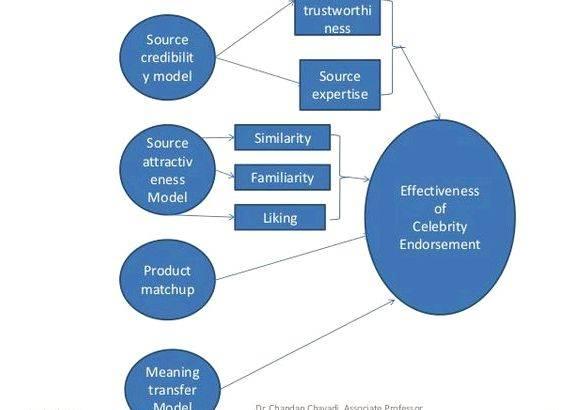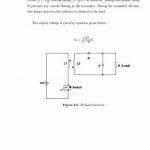What’s the effect on the different demographics of the population?
The Author was always interested in Hollywood and the glamour world, so the idea of using celebrities from the sports world as well as the entertainment industry has always intrigued him. This is the main motivating factor for doing this research. With this research we will look if they really work? This research will find out the effects celebrities have on different demographics of the UK population and if the negative information of the celebrity results in differential evaluations of the brand endorsed by the celebrity.
There has been a lot of work in this area, but since the external environment of an organisation is changes continuously and the fact that the customers are getting smarter. They make educated choices on what brand to buy it would be interesting to see whether a customer would change is view if the brand is endorsed by a celebrity he identifies with.
The use of celebrity endorsement in marketing is not a new phenomenon. Celebrities have been used to endorse brands or product for more than 50 years. The Old Poland company, first used a testimonial about the company by Rev. J.K. Chase of Rummney, New Hampshire, in an advertisement which was published in 1864 (Kaikati 1987, Pajvani 2005). Since then there has been extensive advances of media technology and its ever growing reach have elevated celebrities and the products they endorse to an unprecedented levels of worldwide recognition. Celebrities’ product endorsements transcend national borders, and flow both from the United Kingdom to other countries as well as from other countries to the United Kingdom. The percentage of commercials worldwide featuring a celebrity has doubled in the last ten years to about 17% (White, 2004).
In the U.S. alone, the use of celebrities in advertisements has increased from 10% to 25% over the last decade. (Stafford, Spears, and Hsu, 2003).Today around 20% of all commercials screened in Great Britain includes some sort of celebrity endorsements (Erdogan et al 2001, Pajvani 2005) and 10% of advertising expenditure goes toward celebrity endorsers (Bradley 1996, Pajvani 2005).
Even the ubiquitous American infomercial has adopted the practice of using celebrity endorsers, with growing frequency and apparent effectiveness (Martin, Bhimy, and Agee, 2002). (Money Et al, 2006). Celebrity endorsements can be very expensive, not only in terms of actual monetary outlays to the celebrity but also in terms of intangibles like the celebrity might affect the image of the advertiser. It is difficult to measure advertising effectiveness on sales but when IBM spends almost US$40 on a celebrity ad campaign or Coco Cola signs Bill Cosby for US$25 Million (Agrawal and Kamakura, 1995). It would be interesting to see the effect of celebrity endorsement on various sections of the UK market.
Celebrity is a person who enjoys public recognition by a large share of certain group of people. Whereas attributes like attractiveness, extraordinary lifestyle or special skills are just examples and specific common characteristics cannot be observed, it can be said that within a corresponding social group celebrities generally differ from social norm and enjoy a high degree of public awareness.

This is true for classic forms of celebrities, like actors, models, sports athletes, entertainers and pop stars but also for less obvious groups like businessmen like Richard Branson or even politicians like Rudy Giuliani. (Schlecht 2003) or as C. Wright Mills (1956: 71-2) puts it rather nicely (although in somewhat gendered terms): The celebrities are ‘The Names’ that need no further identification. Those who know them so far exceed those of whom they know as to require no exact computation. Wherever they go, they are recognized, and moreover, recognized with some excitement and awe. Whatever they do has publicity value. More or less continuously, over a period of time, they are the material for the media of communication and entertainment. And, when that time ends – as it must – and the celebrity still lives – as he may – from time to time it may be asked ’Remember him?’ That is what celebrity means. (Moeran 2005)
McCracken (1989) defines a celebrity endorser as an individual who enjoys public recognition and who uses this recognition on behalf of a consumer good by appearing with it in an advertisement. (Rajakaski, Simonsson 2006). Moeran 2005 argues that celebrities are both cultural and economic intermediaries who help the world of producers enter into and become a part of the world of consumers. Together with the products they endorse and the organisations they work for, celebrities are involved in ‘a vast operation of social alchemy’ (Bourdieu 1986: 137) that neatly erases the classic divide between production and consumption. Celebrities appear in public in different ways. First, they appear in public when fulfilling their profession, e.g. Tim Henman, who plays tennis in front of an audience in Wimbledon. Furthermore, celebrities appear in public by attending special celebrity events, e.g. world premieres of movies. In addition, they are present in news, fashion magazines, and tabloids, which provide second source information on events and the ‘private life’ of celebrities through mass-media channels (e.g. Fox 5 news covering Winona Ryder’s trial on shoplifting, InStyle). Last but not least, celebrities act as spokespeople in advertising to promote products and services (Kambitsis et al. 2002, Tom et al. 1992, Schlecht 2003).
McCracken (1989) also described four types of endorsements; Explicit mode (“I endorse this product”), Implicit Mode (“I use this product”), Imperative mode (“You should use this product”) and Co-present mode (“In which the celebrity merely appears with the product”). According to a survey by Video Storyboard Tests Inc. Lipman 1991 said that about 38% of the respondent indicated that celebrity makes advertisements more memorable. They also found that there was an increase of 6% of TV viewers from 1987 to 1991, who feel that there exists a ‘very positive’ feeling about celebrities (Pajvani 2005).
According to Kaikati 1987, the use of celebrity spokesperson help advertisements to stand out in the crowd and get attention in the world where a person sees’s millions of advertisements on a daily basis. While Atkin and block 1983; Sherman 1985 state that the specific image, high profile and familiarity of a celebrity endorser make the advertisement distinctive and thus improves its communicative ability. Mooij, 2004 add that the use of internationally recognised celebrities can help to avoid problems such as time, space, language, religion, relationship, power, masculinity and femininity in their internationalisation and helps people identify with the brand or product internationally as White 2004 explains endorsements by celebrities from the U.S. have become more prevalent in Japan, as doing endorsements is losing its once powerful stigma to a celebrity’s career (Money et al 2005).
The use of a celebrity endorser has also been found to generate a positive impact on the economic return of the firm (Agrawal and Kamakura 1995). A good example of this is ‘Michael Jordan’s Effect’ Johnson and Harrington state that he has contributed around $10 billion to the US economy during the 14years of his NBA career. (Pajvani 2005). Agrawal and Kamakura 1995, also tell us that the announcement of a celebrity endorsement contract has been shown to actually increase the value of the company’s stock prices. (Roberto et al 2006)
Even though celebrities are widely used, there a plenty of potential hazards, as they are all but human. Till and Shimp in 1998 say that the personal problems of celebrities or negative publicity about a celebrity could cause some potential problems to the products or brands they endorse. Kang and Pereira, 2005 states that NBA players’ public image problems reportedly led to a 33% drop in NBA apparel sales from 2004-2005, presumably linked at least partially to indiscretions such as Carmelo Anthony’s much-publicized gang-related music DVD entitled Stop Snitching, which intimidated witness against testifying in drug cases (Money et al 2005). According to Graham 1989, the relation between a brand and celebrity ceases to be distinctive if a celebrity starts endorsing too many or unrelated brands/ products which may compromise the celebrity image. Kaikati 1987 talks about how the image of a brand or product is effected if the celebrity becomes controversial, looses popularity or becomes overexposed or changes image, this could effect the product or brand.(Pajvani 2005) A very good example of this is Model Kate Moss who was dropped by H&M after her coke scandal or Heather McCartney Mills who had a lot of bad publicity by the press and this affected the charity that she worked for where as companies would not want to be associated with her charity. But Lanahan contradicts this by quoting:
“Perfect (endorsers) without flaws may warm the heart of the brand manager, but they tend to leave audiences cold. If you want your (endorser) to connect, give him some problems, preferably the self-inflicted kind.”
-Brandweek (Lanahan 2005)
This is evident from the fact that Virgin Mobile signed Kate Moss on for their Virgin Contract phones advertisements. This research will try to find out if this is true for the respondents in the United Kingdom; it will see what effects it has on the different segments in the UK market.
Models in Endorsements: There is a lot of literature on celebrity endorsements, most of the work can be classified into the following four theory areas.
Ø Source Credibility Model
Ø Source Attractiveness Model
Ø Match up Hypothesis
Ø Meaning Transfer Model.
Source Credibility Model: Source credibility was defined by Ohanian (1991, p 41) as being “…a communicator’s positive characteristics that affect the receiver’s acceptance of a message”. There were scales developed to measuring the credibility of the source. Early models for measuring perceived images were based solely on what was labelled the ‘source-credibility’ model. The source-credibility model (Hovland Irving & Harold 1953) concluded that two factors, expertise and trustworthiness, defined the credibility of a communicator. Ohanian (1990) developed a scale to measure celebrity endorsers’ perceived expertise, trustworthiness and attractiveness by combining the source-credibility and source attractiveness models. (James and Ryan 2001)
Source: (Construction and Validation of a Scale to Measure Celebrity Endorsers’ Perceived Expertise, Trustworthiness, and Attractiveness; Ohanian (1990), Pajvani 2005)
Source Attractiveness Model: According to McGuire 1985; Source Attractiveness Model is considered to be a component of the “source valance” model and draws on the research in social psychology (McCracken 1989). looks at the ‘familiarity’; knowledge of source through exposure. ‘likeability’; affection for source based on his/her physical appearance or behaviour. ‘similarity’; resemblance between the source and the audience and ‘attractiveness’ of the source and had its origins in social psychology (McGuire 1985, McCracken 1989 p. 311, James and Ryan 2001). It suggests that effectiveness of the message depends on these four dimensions. Sources that are familiar, likeable and/or similar to the consumers are attractive and to this extent persuasive (Ohanian 1990). Empirical findings posit that physical attractiveness is one of the key factors in an individual’s initial judgement of another individual as well as influencing attitude change (Baker and 7 Churchill 1977; Caballero and Pride 1984; Chaiken 1979; Joseph 1982; Mills and Aronson 1965). According to Patzer 1983; Petroshius and Crocker 1989; Till and Busler 2000, Attractive models led to more favourable attitudes toward the advertisement and stronger purchase intentions. While Kahle and Homer 1985 suggested Physical attractiveness of the celebrity endorser was found to influence subject recall, product attitudes and purchase intention to a greater extent than endorser likeability or level of product involvement (Pajvani 2005).
Match up Hypothesis: McCracken (1988) and Kamins (1990) criticised both the ‘source-credibility’ and ‘source-attractiveness’ models for their apparent inability to explain why some celebrity endorsers that were credible and successful for some products had failed for others. Jennifer Capriati for example, drove Diadora’s awareness up but was unable to do anything for Oil of Olay (Fein 1994). While according to Bhonslay 1998 Reebok dropped unsuccessful marketing personality Shaquille O’Neal due to poor sales figures despite his positive media presence. The ‘match-up hypothesis’ was developed and involves the celebrity ‘owning’ their image, which they pass on to the product and then to the consumer. (James and Ryan 2001)
Kahle and Homer (1985) found that in the case of attractiveness related products, the use of physical attractive celebrities increased attitude towards the product or brand, recall of the product by subjects and product purchase intention. However, Kamins 1990 found that they did not demonstrate that an attractive celebrity is less effective when endorsing a product not used to enhance one’s attractiveness, such as home computers (Pajvani 2005). According to Friedman and Friedman (1979), a famous relative to a ‘normal’ spokesperson is more effective for products high in Psychological or social risk, involving such elements as good taste, self-image, and opinion of others.
Table 2:
Successes and Failures
Source: Successful and unsuccessful celebrity endorsements (Source: Till and Busler 1998, Walker et al. 1992, Till 1998, Schlecht 2003)
Meaning Transfer Model: According to McCracken (1989) who addressed the endorsement process from a cultural perspective said that the effectiveness of celebrity spokespersons by assessing the meanings consumers associate with the endorser and eventually transfer to the brand (Schlecht 2003). He argued
that the endorsement process depends upon the symbolic properties of the celebrity endorser and the celebrity served the endorsement process by taking on the meanings that then carry from advertisement to advertisement. McCracken has described the Celebrity Endorsement process as a special instance of a more general meaning transfer. In the model, he goes on to say that the cultural meanings move through a conventional path to individual consumers. Meanings begin as something inherent and resident in the culturally constituted, physical, and social world (McCracken 1986, Pajvani 2005). Kambitsis et al. (2002, p. 160), found the athletes’ personality was an important factor in influencing “specific target groups, to which such personalities are easily recognizable and much admired.” McCraken (1989) says that the meaning transfer in the endorsement process is done is three steps as seen below. (Schlecht 2003)
Figure 1: Meaning transfer in the Endorsement Process
Source: (McCracken 1989, Schlecht 2003)
After looking at the various models we can understand the various reasons why the endorsements work
METHODS AND PROCEDURES:
This section will look into the various methods and procedures to be used in this study. It explains how data for the study will be selected and acquired and describes sources of data to be used. The last part gives suggested method of analyzing data. This study will use a lot of secondary data from different sources and also qualitative and quantitative questionnaires, personal interviews to study the effects of celebrity endorsement on the different segments of UK population.
Methodology: This research will be a combination of rigorous primary and secondary research processes. The primary research will use a combination of methods and it will be both of qualitative and quantitative nature and will be based on structured, in-depth telephonic interviews or personal interviews, questionnaires sent to the sample in the target audience and also internet surveys.
The Data Set: A lot of secondary data will be used from the literature already available and the various studies done different authors, some of whom are mentioned above in the literature review in this document. Some information would also be sourced from the Ebsco website and various other online surveys done by advertising agencies and also bodies dealing with them. As we are looking different segments of the UK population it is very important to choose the right segments. The segments could be done on the basis of age or through different social groups and also by gender. This is a vital decision on what segmentation should be done. I have chosen to segment the Target audience by age as this will show a trend in the effects of Celebrity endorsements.
Quantitative research: This will be mainly through questionnaires sent via email or paper questionnaires to a sample size of 1000 taking into consideration that about 10 percent of the target will reply to the sent questionnaires. This will be followed by a telephonic interview if it is felt that certain categories of respondents have not responded adequately from the sample size. This particular method will ensure the accuracy of the results as all the different categories of the target audience is covered. Although the accuracy of this particular method is very low compared to personal Interviews, this can be countered by a proper segmentation of the target audience, proper selection of sample size and carefully structured questionnaires.
Qualitative research: This would be a combination of personal interviews and telephonic interviews. Certain target audience from the sample size would be contacted and asked to give a personal interview or telephonic interview. This would be an expensive exercise in terms of time but so is every qualitative research where we are looking for the views and thoughts of the people as they have to be skilfully got out of the targets minds as nobody says exactly what they feel either due to fear of others thoughts or just that they cant explain themselves clearly.
Sample size: This is amongst the most important determining factors of the success of the research project. The bigger the sample size the higher the cost of the research and the longer it would take to complete the research. We have chosen a sample size of 1000 for the quantitative research. Out of the response that we have got and a few fresh subjects we would get some qualitative feed back. There would be about 25 telephonic interviews and 25 personal interviews.
Data Analysis and Interpretation:
Collecting the data is one part of the research project, and more intellectual part is the Data Analysis and interpretation. If this goes wrong all the time spend researching will be wasted. As we are all different it is more difficult to interpret what is said and why it is said. The idea of a research is to either support the research literature review or to show the changes that have taken place. It will be interesting to see how celebrity endorsement affects the different segments of the population and then see how this could be used to benefit the companies using celebrity endorsers.
Words: 3031
References
James, K & Ryan, M, 2001, “Attitudes toward female sports stars as endorsers.” Proceedings of ANZMAC Conference, Massey University, Auckland, pp. 1-8.
Kaikati, Jack G,1987, “Celebrity Advertising: A Review and Synthesis,” International Journal of Advertising, 6, 93.
Lanahan, Brian, 2003, “Keeping Your Brand Icon Alive and Well,” Brandweek, May 19, 2003: 27-28.
Martin, Brett A.S. Andrew C. Bhimy, and Tom Agee, 2002, “Infomercials and Advertising Effectiveness: An Empirical Study,” Journal of Consumer Marketing, 19, 6 (2002): 468-480.
McCracken, Grant (1989), “Who Is the Celebrity Endorser? Cultural Foundations of the Endorsement Process,” Journal of Consumer Research, 16 (3), 310-321.
Moeran B, 2005, “Celebrities, Culture and a Name Economy” Department of Intercultural Communication and Management, Copenhagen Business School.
Money Et al, 2006, “Celebrity Endorsements in Japan and the United states: is negative information all that harmful?” Journal of Advertising Research, Vol. 26, No. 1 (June), 2006 accessed from marriottschool.byu.edu/emp/BMS/Documents/ Celebrity_Endorsers_Money_et_al.doc accessed on 10th June 2006
Mooij, Marieke de (2004), “Consumer Behaviour and Culture, Consequences for Global Marketing And Advertising” SAGE Publications.
Ohanian, R 1990. Construction and validation of a scale to measure celebrity endorsers’ perceived expertise, trustworthiness, and attractiveness. Journal of Advertising, vol. 19, no. 3, pp. 39-52.
Ohanian, R 1991. The impact of celebrity spokespersons’ perceived image on consumers’ intention to purchase. Journal of Advertising Research, vol. 13, no. 1, pp. 46-55.
Pajvani M, 2005, `An Examination of Universal Personality Endorser and the Interaction Between Perceived Celebrity Image (PCI) and Perceived Brand Image (PBI) Across National Boundaries’ accessed from lubsleeds.ac.uk/ researchProgs/ Fileadmin/user_upload/documents/Pajuani.pdf 10th June 2006
Saunders, M. Lewis, P. and Thornhill, A. (2003). Research methods. Harlow: Pearson Education limited.
Schlecht C, 2003, Celebrities’ Impact on Branding, Centre on Global Brand Leadership Columbia Business School.
Stafford, Marla Royne, Nancy E. Spears and Chung-kue Hsu, “Celebrity Images in Magazine Advertisements: An Application of the Visual Rhetoric Model,” Journal of Current Issues and Research in Advertising, 25, fall (2003): 13-20.
Roberto S et al, “Consumer Buying behavior in response to Corporate Scandal: The case of Martha Stewart” Consumer Interests Annual, Volume 52, 2006.
White, Erin, “Found in Translation?” Wall Street Journal, September 20, 2004: B1.
Hi, you have posted such precious and informative article which gave me lot of information. I hope that you will keep it up and we will have more informative and helping news from you. Thanks | Dissertation Writing Services
thanks for sharing an informative article as sharing dissertation writers uk
This comment has been removed by the author.
Mbl-Group-International Providing is a Marketing Services for Celebrities, Marketing Services celebrities Advertising and Styling for Leading A-list Celebrities specialize in Full Services for A-list Celebrities.




 Master thesis proposal presentation ppt des
Master thesis proposal presentation ppt des Buck boost converter thesis proposal
Buck boost converter thesis proposal Adrien de larrard thesis proposal
Adrien de larrard thesis proposal Sample thesis proposal for it students portal
Sample thesis proposal for it students portal Pasasalamat o pagkilala thesis proposal
Pasasalamat o pagkilala thesis proposal






